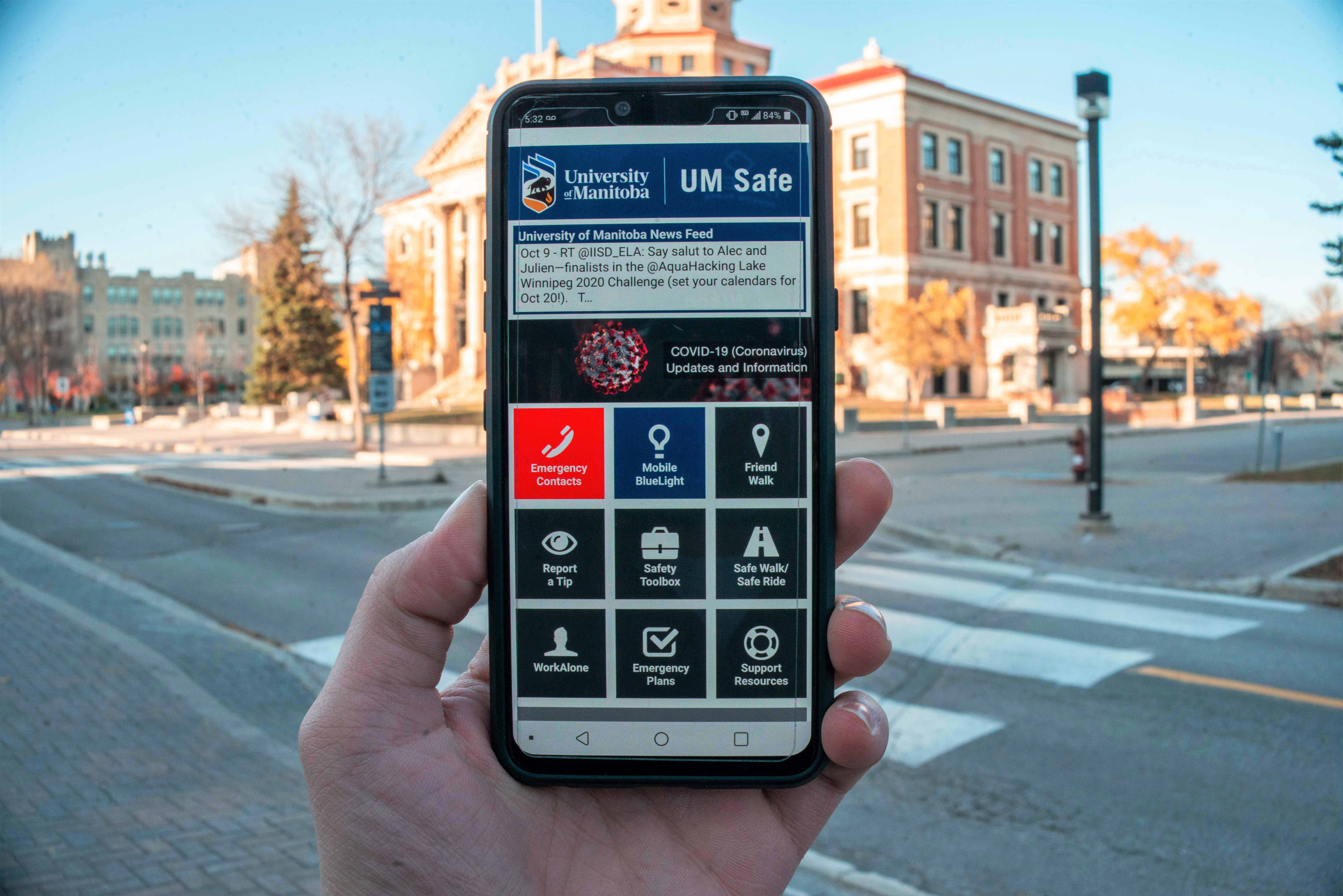Earlier this fall, the U of M’s security services launched a free app for mobile devices that, according to security services director Rick Jansen, is “a tool that will provide information at [the user’s] fingertips.”
The app, called UM Safe, was created to make safety resources and campus information more accessible and more widely available to students, staff and faculty.
It contains nine main features, along with a university news feed and COVID-19 updates and information.
Emergency contact information of campus security and police will be available, and a safety toolbox, emergency plans, and an ability to report a tip and several different support resources.
Users will have access to counselling resources both on and off-campus, sexual violence support and education, travel advice and advisories, the lost and found, mental health and wellness supports, campus maps and the office of human rights and conflict management.
Some features will require that users provide more information, like contact information and locations.
Supports for those working within the Fort Garry or Bannatyne campus boundaries include mobile access to options currently offered by security services, like providing safe walks and safe rides, and a mobile version of the BlueLight system on campus.
“We want to make students feel safe,” said Jansen.
To request a safe walk or safe ride, where security services members will either accompany a person on a walk to a location or provide a ride to a location within university boundaries, the user can press the safe walk/safe ride button to connect with security services.
The BlueLight feature is a mobile version of the stationary BlueLights around campus. If a person on campus feels threatened, they can press the BlueLight button, which will send a direct location of the button pressed to security services.
The app has also introduced new features, Friend Walk and WorkAlone.
To use Friend Walk, a user will text a contact and send their route on campus to them. From there, the contact will be able to see them walking until they arrive at the set destination.
Jansen said that WorkAlone is a feature that many schools don’t use, but adheres to provincial requirements for working alone.
Suppose a user is working alone in an office or remote area. In that case, they can set a contact person or security services and set predetermined times for the app to check in on them.
If the user doesn’t respond to the check-in, any information necessary gets forwarded to their contact.
The usage of features on the app is not monitored by security services, except if a user contacts them.
Though they implemented the app while classes are remote, Jansen said that there still is some usage.
“Obviously, we don’t have as high uptake right now as we would when there are 30,000 students on campus, but we are getting uptake, and we’re getting new members daily on our app.”


